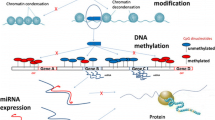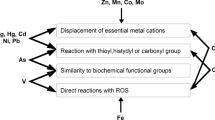Abstract
Metallothioneins (MTs) are low molecular weight proteins, mainly implicated in metal ion detoxification. Increase in MT contents is considered to be a specific biomarker of metal exposure. Recently it has been demonstrated that MTs participate in several cellular functions such as regulation of growth, and antioxidative defenses. Therefore, the induction of MTs as biomarkers of exposure to the pesticide isoproturon has been investigated in the aquatic worms Tubifex tubifex. MT levels in exposed worms increased significantly (p < 0.05) after 2, 4, and 7 days of exposure to different concentrations of isoproturon (maximum increase compared to unexposed controls: +148.56% for 10 mg l−1 after 4 days of exposure). In response to isoproturon, the activity of glutathione-S-transferase (max. +52%), glutathione-reductase (max. +100%), and catalase (max. +117%) increased, demonstrating the occurrence of an oxidative stress response to the herbicide. Thus, the increase in MT contents caused by isoproturon was interpreted as a defense response towards increased oxidative stress generated by the herbicide. Residues of isoproturon and its metabolites, 1-(4-isopropylphenyl)-3-methylurea, 1-(4-isopropylphenyl) urea, and 4-isopropylanilin were detected in the worm growth medium. Half-life of the herbicide was shorter at a low (0.1 mg l−1) initial concentration. The herbicide accumulated in T. tubifex but no metabolite could be detected.






Similar content being viewed by others
References
ASTM (1994). Standard guide for conducting sediment toxicity tests with freshwater invertebrates. E 1383-94a. In Annual Book of ASTM Standards, Vol. 11.4, pp. 1-30. Philadelphia: ASTM
Aston R.J., (1973). Tubificids and water quality: a reviewEnviron. Pollut. 5: 1–10
Bauer-Hilty A., Dallinger R., Berger B., (1989). Isolation and partial characterization of a Cd-binding protein from Lumbriculus variegatus (Oligochaeta, Annelida)Comp. Biochem. Physiol. 94C: 373–79
Bebianno M.J., Nott J.A., Langston W.J., (1993). Cadmium metabolism in the clam Ruditapes decussata: the role of metallothioneinAquat. Toxicol. 27: 315–34
Bradford M.N., (1976). A rapid and sensitive method for the quantitation of micrograms of protein utilizing the principle of protein–dye bindingAnal. Biochem. 72: 248–54
Bremner I., (1987). Nutritional and physiological significance of metallothionein. In J.H.R. Kägi, Y. Kojima (eds). Metallothionein II. Basel: Birkäuser Verlag. pp. 81–107
Carlberg I., Mannervik B., (1985) Glutathione reductase. In A. Meister (ed.). Method in Enzymology Vol. 113San Diego: Academic Press. pp. 484–9
Cherian M.G., Goyer R.A., (1978). Minireview Metallothionein and their role in the metabolism and toxicity of metalLife Sci. 23: 1–10
Claiborne A., (1985) Catalase activity. In R.A. Greenwald (ed.) Handbook of Methods in Oxygen Radical Research. Boca-Raton: CRC Press. pp. 283–4
Cossu C., Doyotte A., Jacquin M.C., Vasseur P., (1997) Biomarqueurs du stress oxydant chez les animaux aquatiques. In L. Lagadic, T. Caquet, J.C. Amiard, F. Ramade (eds). Biomarqueurs en Ecotoxicologie: Aspects Fondamentaux. Paris: Masson. pp. 149–61
Dalton T., Palmiter R.D., Andrews G.K., (1994). Transcriptional induction of the mouse metallothionein-1 gene in hydrogen peroxide-treated hepatic cells involves a composite major late transcription factor/antioxidant response element and metal response promoter elementsNucl. Acid Res. 22: 5016–23
Davies S.R., Cousins R., (2000). Metallothionein expression in animal: a physiological perspective and functionRecent Advance Nutrition Sci.1085–8
Davies J.M., Lowry C.V., Davies K.J.A., (1994) Free radicals. In H. Nohl, H. Esterbauer, C. Rice-Evans (eds). Environment, Medicine and Toxicology. London: Richelieu Press. pp. 563–78
Eck P., Pallauf J., (1999). Induction of metallothionein by paraquat injection in zinc-deficient ratsJ. Anim. Physiol. An. N. 81: 203–11
Geracitano L., Monserrat J.M., Bianchini A., (2002). Physiological and antioxidant enzyme responses to acute and chronic exposure of Laeonereis acuta (Polychaeta, Nereidiae) to copperExp. Marine Biol. Ecol. 277: 145–56
Geret F., Cosson P., (2002). Induction of specific isoforms of metallothioneins in mussel tissues after exposure to cadmium or mercuryArch. Environ. Contam. Toxicol. 42: 36–42
Gillis P.L., Diener L.C., Reynoldson T.R., Dixon D.G., (2002). Cadmium-induced production of a metallothionein protein in Tubifex tubifex (Oligochaeta) and Chironomus riparius (Diptera): correlation with reproduction and growthEnviron. Toxicol. Chem. 21: 1836–44
Gillis P.L., Reynoldson T.B., Dixon D.G., (2004). Natural variation in a metallothionein-like protein in Tubifex tubifex in the absence of metal exposureEcotox. Environ. Safe. 58: 22–8
Hazarika A., Sarkar S.N., (2001). Effect of isoproturon pretreatment on the biochemical toxicodynamics of anilofos in male ratsToxicology 165: 87–95
Helweg A., Fomsgaard I.E., Reffstrup T.K., Sørensen H., (1998). Degradation of mecoprop and isoproturon in soil. Influence of initial concentrationInt. J. Environ. Anal. Chem. 70: 133–48
Hensbergen P.J., van Velzen M.J.M., Nugroho R.A., Donker M.H., van Straalen N.M., (2000). Metallothionein-bound cadmium in the gut of the insect Orchesella cincta (Collembola) in relation to dietary cadmium exposureComp. Biochem. Physiol. C125: 17–24
INRA (2004). AGRITOX – Base de données sur les substances actives phytopharmaceutiques. http://www.inra.fr/agritox/
Karin M., (1985). Metallothionein: protein in search of functionCell 41: 9–10
Lucan-Bouché M.L., Biagianti-Risbourg S., Arsac F., Vernet G., (1999). An original decontamination process developed by the aquatic oligochaete Tubifex tubifex exposed to copper and leadAquat. Toxicol. 45: 9–17
Martin N.A., (1986). Toxicity of pesticides to Allobophora caliginosa (Oligochaeta: Lumbricidae)N. Z. J. Agr. Res. 29: 699–706
Milbrik G., (1987). Biological characterization of sediments by standardized tubificid bioassaysHydrobiologia 155: 267–75
Mosleh Y.Y., Paris-Palacios S., Couderchet M., Vernet G., (2003a). Effects of the herbicide isoproturon on survival, growth rate, and protein content of mature earthworms (Lumbricus terrestris L.) and its fate in the soilAppl. Soil Ecol. 23: 69–77
Mosleh Y.Y., Ismail S.S., Ahmed M.T., Ahems Y.M., (2003b). Comparative toxicity and biochemical responses of certain pesticides on mature earthworms Aporrectodea caliginosa under laboratory conditionsEnviron. Toxicol. 19: 86–93
Nordberg M., (1997). Metallothioneins: historical review and state of knowledge Talanta 46: 246–53
Nöstelbacher K., Kirchgessner M., Stangl G.I., (2000). Separation and quantitation of metallothionein isoforms from liver of untreated rats by ion-exchange high-performance liquid chromatography and atomic absorption spectrometryJ. Chromatogr. B 744: 273–82
Paris-Palacios S., Biagianti-Risbourg S., Vernet G., (2003). Metallothionein induction related to structural perturbations and antioxidative defences in liver of roach (Rutilus rutilus) exposed to the fungicide procymidoneBiomarkers 8: 128–41
Regoli F., Nigro M., Bertoli E., Principato J., Orlando E., (1997). Defences against oxidative stress in the Antartic scallop Adamussium colbecki and effects of acute exposure to metalsHydrobiologia 355: 139–44
Reynoldson T.B., Thompson S.P., Bamsey J.L., (1991) A sediment bioassay using the tubificid oligochaete worm Tubifex tubifexEnviron. Toxicol. Chem. 10: 1061–72
Ribeiro S., Sousa J.P., Noguerira A.J.A., Soares A.M.V.M., (2001). Effect of endosulfan and parathion on energy reserves and physiological parameters of the terrestrial isopod Porcellio dilatatusEcotox. Environ. Safe. 49: 131–8
Ribera D., Narbonne J.F., Arnaud C., Saint-Denis M., (2001). Biochemical response of earthworms Eisenia fetida andrei exposed to contaminated artificial soil, effects of carbarylSoil Biol. Biochem. 33: 1123–30
Roesijadi G., (1992). Metallothionein in metal regulation and toxicity in aquatic animal Aquat. Toxicol. 22: 81–114
Saravana-Bhavan P., Geraldine P., (2001). Biochemical stress responses in tissues of the prawn Macrobarchium malcomsonii on exposure to endosulfanPestic. Biochem. Physiol. 70: 27–41
Schlenk D., Wolford L., Chelius M., Steevens J., Chan K.M., (1997). Effect of arsenite, arsenate, and the herbicide monosodium methyl arsenate (MSMA) on hepatic metallothionein expression and lipid peroxidation in channel catfishComp. Biochem. Physiol. 118C: 177–83
SIABAVE (2002). Synthèse des études menées sur le bassin versant du champ captant de Couraux (Marne). pp. 67–92. Rapport BRGM, FREDONCA. SIABAVE, Reims
Suzuki K.T., Yamamaura M., Mori T., (1980). Cadmium-binding proteins induced in earthwormArch. Environ. Contam. Toxicol. 9: 415–24
Tate D., Miceli M.V., Newsome D.A., (2002). Expression of metallothionein in human chorioretinal complexCurr. Eye Res. 24: 12–25
Viarengo A., (1989). Heavy metal in marine invertebrate: mechanisms of regulation and toxicity at the cellular levelCRC Crit. Rev. Aquat. Sci. 1: 295–317
Widianarko B., van Straalen N., (1996). Toxicokinetics-based survival analysis in bioassays using non-persistent chemicalsEnviron. Toxicol. Chem. 15: 402–6
Acknowledgments
This work was financed in part by the French “Ministère de la Recherche et des Technologies” through the program “Unité de Recherches Vignes et Vins de Champagne” (URVVC) EA 2069 and by Europol’Agro through the program “Vineal”.
Author information
Authors and Affiliations
Corresponding author
Rights and permissions
About this article
Cite this article
Y. Mosleh, Y., Paris-Palacios, S., Couderchet, M. et al. Effects of the Herbicide Isoproturon on Metallothioneins, Growth, and Antioxidative Defenses in the Aquatic Worm Tubifex tubifex (Oligochaeta, Tubificidae). Ecotoxicology 14, 559–571 (2005). https://doi.org/10.1007/s10646-005-0008-6
Accepted:
Published:
Issue Date:
DOI: https://doi.org/10.1007/s10646-005-0008-6




